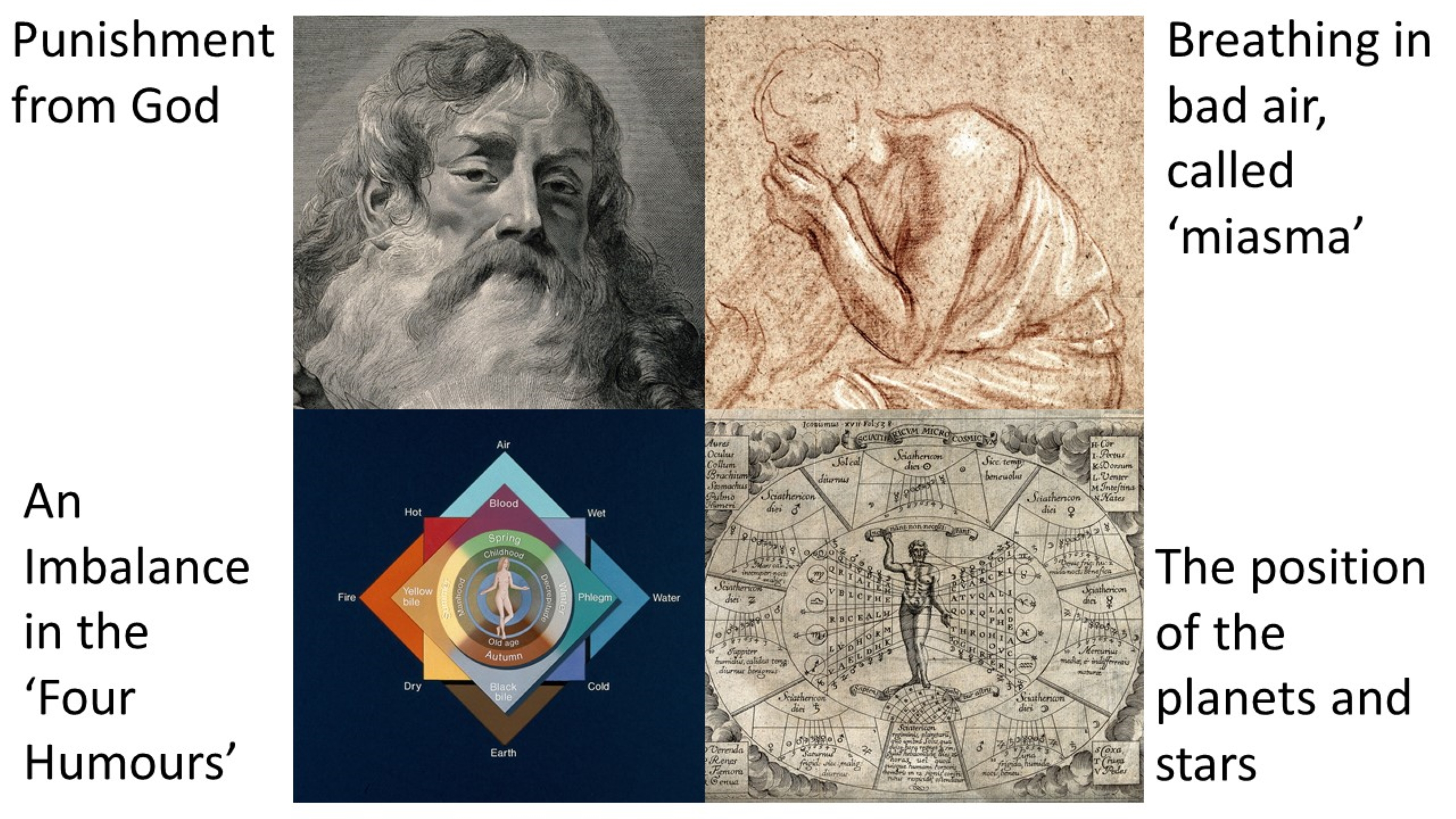Seventeenth-Century Explanations for the Plague
To people living in the seventeenth century, plague seemed to strike at random. Although children, the elderly and those already in poor health were especially at risk, plague victims included adults and the previously healthy. To those in authority, it was particularly disturbing that plague could strike the rich as well as the poor. The unpredictability of the plague and a lack of knowledge about bacteria made it difficult for people at the time to explain what caused the plague. However, a number of theories were put forward:

All images from the Wellcome Collection. Reproduced under a CC BY Licence
The ‘four humours’ were the four fluids that doctors at the time thought made up the human body: blood, phlegm, yellow bile and black bile. Doctors also believed that the position of the stars and planets could have an impact on people’s health.
